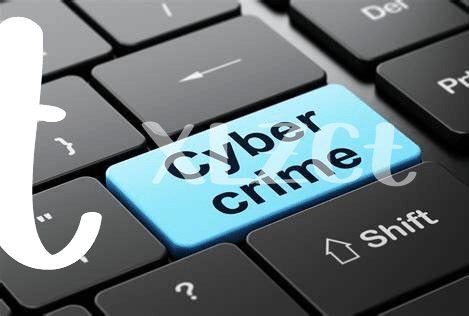🛡️ Understanding Bitcoin Ransomware: the Basics

Imagine your computer suddenly locks up, displaying a message demanding payment in Bitcoin to unlock your precious files. This nightmare is known as Bitcoin ransomware, a type of malware that kidnappers digitally, taking your data hostage. The mechanics are simple yet cunning; hackers sneakily install a tiny, malicious program onto your computer—often through a deceptive email or website. Once activated, this program locks you out of your files, encrypting them with a key known only to the attacker. They then demand a ransom, typically in Bitcoin due to its anonymity, to provide the decryption key. This digital hijacking has grown increasingly sophisticated, but understanding its basics arms you with the first layer of defense.
| Term | Explanation |
|---|---|
| Ransomware | A type of malicious software that encrypts the victim’s files, making them inaccessible until a ransom is paid. |
| Bitcoin | A digital or virtual currency that uses cryptography for security. It’s the preferred method of payment in ransomware attacks due to its anonymity. |
| Encryption Key | A string of characters used to lock (encrypt) or unlock (decrypt) digital information. |
🚨 Real-life Stories: When Ransomware Strikes
Imagine clicking on an innocent-looking email and the next thing you know, your computer screen flashes a demand for payment in Bitcoin to unlock your files. This isn’t just a scene from a thriller movie; it’s a reality for countless individuals and businesses hit by ransomware. Take, for instance, a small business owner who found their entire customer database locked up right before a major sale. Scrambling to regain access, they faced a tough choice: lose crucial data or pay a hefty sum in a currency they barely understood.
In another corner of the world, a hospital’s critical systems were held hostage, delaying vital medical procedures. The attackers demanded a large Bitcoin ransom, putting lives at risk. These stories underline not just the ruthlessness of cybercriminals but also highlight the growing use of digital currency in such schemes. Amidst the chaos, information became a beacon of hope. Learning from these incidents, people started to fortify their defenses, share knowledge, and empower their communities against future threats.
🔒 Boost Your Defense: Simple Security Tips

Protecting yourself from Bitcoin ransomware doesn’t need to feel like rocket science. Start with the basics: keep your software updated, as those updates often patch up security loopholes. Think of it like fixing a fence to keep unwanted guests out. Next, be wary of what you click on. Unexpected emails asking you to download attachments are like strangers offering candy – it’s best to just say no. Creating backups of your important files can also be a lifesaver. Imagine having a spare key to your house; if you ever get locked out, you’re covered. Finally, using antivirus software is like having a guard dog for your digital home, alerting you to potential intruders and keeping your space safe. By integrating these simple habits into your digital routine, you’ll significantly bolster your defenses against unwanted virtual demands.
🕵️♂️ Spotting the Red Flags: Avoidance Techniques

Imagine walking down a familiar street and suddenly spotting signs you’ve never noticed before, warning you of a detour ahead. In the digital world, spotting ransomware risks is a bit like noticing those signs. It’s about being alert to the unexpected, such as an email from a friend that doesn’t sound quite like them or a warning from your device that something’s amiss. Think of these signals as the digital world nudging you, saying, “Hey, something’s not right here.” By paying attention to these subtle hints, you can dodge the detours and pitfalls that ransomware tries to lay in your path.
Now, imagine having a treasure map that not only guides you through the realms of cyberspace but also educates you on making the digital environment a better place. This is where learning about bitcoin and financial inclusion suggestions comes in. It’s akin to gaining knowledge on how to fortify your defenses, making your digital journey not just safer but also more informed and inclusive. As you navigate through the vibrant landscape of the web, equipping yourself with avoidance techniques against ransomware is not just about safeguarding your journey but also about contributing to a community that values security, sustainability, and inclusivity.
🧑💻 Got Hit? First Steps to Take
Finding yourself in the middle of a Bitcoin ransomware mess is like waking up to find your digital world flipped upside down. Panic might be your first response, but it’s crucial to keep a cool head. The initial steps you take are pivotal in navigating this digital storm. Reach out to IT professionals immediately – think of them as your digital superheroes. They have the tools and know-how to start damage control. Meanwhile, it’s time to alert the authorities. Reporting the incident can feel like a daunting step, but it’s a necessary one. They might not arrive in capes, but their expertise in cyber threats is invaluable.
| Action | Description |
|---|---|
| Contact IT Professionals | Seek their expertise for immediate damage control and assessment. |
| Report to Authorities | Provide them with all the details for a better chance at tracking the perpetrators. |
Beyond these immediate actions, take a moment to document everything. This isn’t just busywork. Keeping a detailed record from the onset can be a guiding light for both recovery efforts and when liaising with law enforcement or your cyber insurance provider. Remember, in the whirlwind of a Bitcoin ransomware attack, having a clear, documented trail can make all the difference in charting your path to recovery.
🚀 Beyond Attack: Recovery and Strengthening

Imagine your computer screen suddenly showing a demand for payment in Bitcoin to unlock your files. It’s a heart-sinking moment, but even if you find yourself in this tight spot, there’s a path forward. The phase following an attack is about picking up the pieces and rebuilding stronger defenses. First things first, breathe. Then, get in touch with IT experts who can help decipher the extent of the breach and start the recovery process. Next, it’s about learning from the incident. Update your security measures, educate your team on new tricks scammers use, and backup your files regularly. Remember, it’s not just about getting back on track but setting a new track that’s tougher for attackers to crack. Consider joining forces with communities focused on cybersecurity and Bitcoin community projects, where you can find support and advice on safeguarding yourself against future threats. Recovery isn’t just about bouncing back; it’s about bouncing back stronger, with new knowledge and tools at your disposal.
